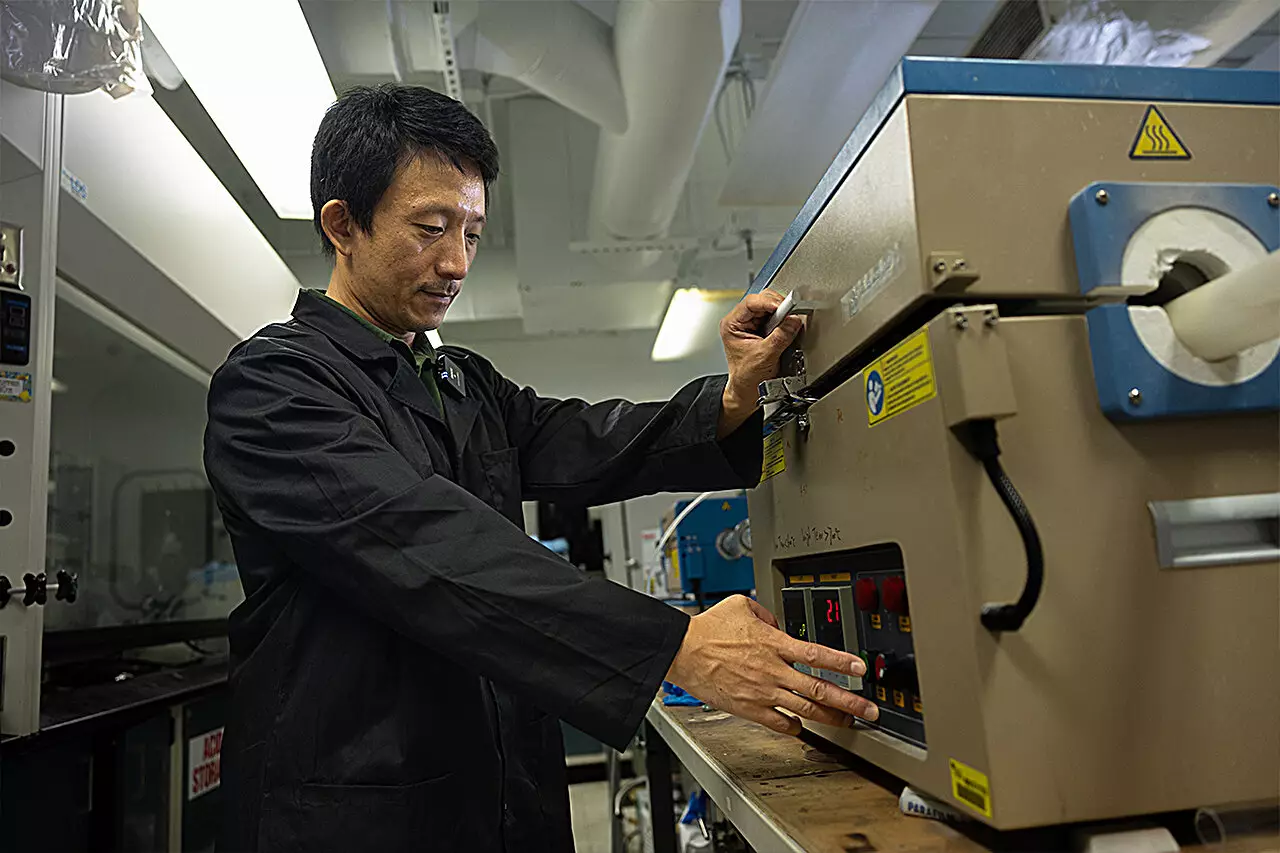As the world grapples with the strategic imperative to combat climate change, researchers are actively seeking methodologies to mitigate the adverse effects of carbon dioxide (CO2) emissions. Leading this frontier of innovation is Yang Yang, an associate professor at the University of Central Florida (UCF) who has made significant strides in the development of a technology that captures CO2 and synthesizes it into valuable fuels and chemicals. This novel approach, detailed in a recent publication in the Journal of the American Chemical Society, aims to offer a sustainable solution to reducing our carbon footprint while simultaneously fulfilling the growing demand for alternative energy sources.
Yang’s innovation lies in a specially designed device that utilizes a microsurface made from a tin oxide film, enhanced with a fluorine layer, to effectively capture gaseous CO2. The mechanism involves a bubbling electrode that extracts CO2 from the ambient environment and facilitates its conversion into carbon monoxide and formic acid—both of which are essential intermediates in the production of chemical goods. This technology operates on a principle that combines cutting-edge materials science and environmental sensitivity. Yang states, “We want to create a better technology to make our world better and cleaner,” underscoring the essence of his research in tackling one of the most pressing environmental issues of our time.
Learning from Nature: Biomimicry in Action
In an interesting twist of scientific inspiration, Yang and his team drew guidance from nature, particularly the properties of the lotus plant. The hydrophobic nature of the lotus leaf, which allows water to bead and roll off, provided crucial insights into designing a conductive surface that could effectively manage water and CO2 reactions. The successful emulation of this natural mechanism involves preventing excessive water accumulation on the surface, which could otherwise hinder the conversion of CO2 into usable chemicals. This meticulous balance is paramount, as it minimizes the risk of generating hydrogen—a byproduct that reduces the overall energy efficiency of the process.
Customized Pathways: Flexibility in Chemical Production
The versatility of Yang’s device is another highlight of the technology. The electrocatalytic reduction process affords researchers the opportunity to tailor outcomes: methane, methanol, ethylene, and other carbon-rich substances can be produced based on specific catalysts and reaction pathways. The ability to modify these reactions broadens the potential applications of this technology. Yang emphasizes the significance of this adaptability, stating, “We just reduce the concentration of carbon dioxide in the air and convert it in the liquid and gas phase so we can directly use those converted chemicals and fuels for other applications.”
Challenges and Efficiency: Aiming for Optimal Performance
While the innovation represents a clear advancement, Yang candidly acknowledges the challenges encountered during the research. Managing water saturation levels poses a considerable obstacle. “If you have too much water surrounding your materials, you may produce hydrogen instead of converting carbon dioxide to chemicals,” he explains. Striking the right balance is essential not only for enhancing carbon reduction efficiency but also for ensuring that the energy input is effectively translated into productive chemical transformations. The development of materials with hydrophobic properties bolsters this endeavor, allowing for improved CO2 conversion without succumbing to water interference.
The Future of Carbon Capture Technology
Yang’s pioneering research aligns with broader global efforts to develop sustainable methods of carbon capture, including tree planting initiatives and scaled-up industrial technologies. His aim is to present this innovative CO2 capture and conversion device as a viable alternative that is less labor-intensive and costly than existing methods. Another factor to consider is the energy input; Yang underscores the feasibility of utilizing intermittent renewable energy sources—like solar or wind power—within this framework. This approach to harnessing renewable energy signifies a step forward in integrating sustainability across various facets of technological development.
In collaboration with a diverse array of institutions, including the University of Houston and Stanford University, Yang’s research embodies a collective pursuit of a sustainable future. The current prototype lays the groundwork for larger systems capable of demonstrating the device’s efficiency in real-world applications. Yang envisions the eventual creation of a larger-scale prototype to reveal the rapid conversion of CO2 and production of usable chemicals. This fundamental study represents not merely a scientific accomplishment but a beacon of hope in the ongoing quest for effective climate change solutions.
The journey laid out by Yang and his team signifies an inspiring stride toward a sustainable future. Through innovative research that mirrors nature’s ingenious designs, there lies potential for practical, eco-friendly solutions to one of humanity’s most formidable challenges—climate change. The advancements in CO2 capture and conversion present a promising narrative, one where science and sustainability converge to forge a cleaner planet, one innovation at a time.


Leave a Reply